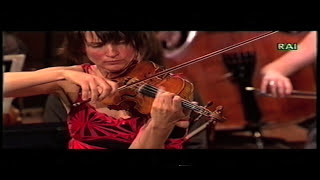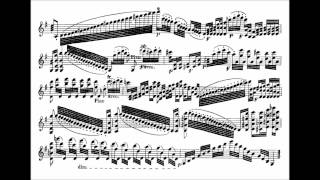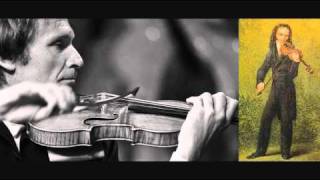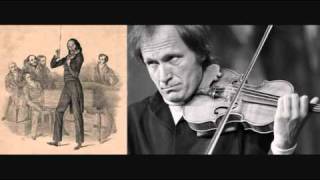Monday, 12 January, 2026г.
















Где искать: по сайтам Запорожской области, статьи, видео ролики
пример: покупка автомобиля в Запорожье
Viktoria Mullova - Works For Solo Violin : Bach | Bartók | Paganini
Philips Digital Classics 420 948-4 | 1988
Program:
Johann Sebastian Bach - Partita No. 1, BWV 1002
Béla Bartók - Sonata for solo violin [28:05]
Niccolò Paganini - Introduction and Variations on «Nel cor più non mi sento» [52:19]
The origins of Bach's music for unaccompanied violin lie in the German Baroque school of composition for the instrument, whose chief interest was polyphony, an element largely absent from contemporaneous Italian and French violin music. The instrument was then played with a heavier bow, a flatter bridge, and lighter strings, which made chords and polyphonic part-writing easier to manage. But the instrument was comparatively puny, and besides far surpassing the equivalent pieces by other composers Bach completely transcended the violin's limitations. His unaccompanied works demonstrate his mastery of the instrument's idioms and performance techniques, and his ability to employ them to the fullest compositional advantage in the elaborately developed fugues and other movements found in the sonatas and in the elegant dances which make up the partitas.
Supposedly a great conservative, Bach in his B minor Partita departs from the classic Allemande - Courante - Sarabande - Gigue pattern of French dance suites in two ways. First, he follows each movement with a variation on itself, or double, and secondly he ends with a bourée instead of a gigue. The resulting eight movements, dances and doubles alike, are all in two-part form, repeats. In the first three pairs the modulation at the end of the opening section is to the dominant, F sharp major, but in the bourée it is to the relative D major.
Bach has had only one fully worthy successor in this field, Bartók's Sonata being the sole late work for unaccompanied violin to attain the same creative level. And like the Bach compositions it embodies a profound understanding of the instrument. Of the four movements, the first is headed Tempo di ciaccona, and it should be noted that this is a tempo indication only, the movement being in sonata form with some of the outward character of a chaconne.
This movement is strongly founded in G, minor at first but ending in major, although it develops much chromatic freedom. Seconds, fourths, and sevenths are prevalent, and these, together with certain rhythmic patterns, point to the music's roots in Hungarian peasant song and dance. The succeeding fugue is freer than those in Bach's sonatas, almost a fantasy, with the subject undergoing constant changes even in the exposition. Full of long chromatic lines, the Melodia is in ternary form with the final section, again, greatly varied, and the Presto is a rondo with the character of a scherzo.
The dating of Paganini's works is uncertain, but his six variations on «Nel cor più non mi sento,» an aria from Paisiello's opera "La Molinara," were probably written in 1820. The first variation, marked leggiero, alternates quick runs with martellato double-stopped passages while the second, andante, has a melody played above a continuous tremolo and the third, allegretto, is punctuated by echo phrases in harmonics. The last three variations are respectively studies in pizzicato, multiple-stopping, rapid arpeggios, and the whole work is a miniature survey of the innovative virtuosity with which Paganini transformed violin-playing.
© 1988 Max Harrison
Теги:
Viktoria Mullova (Musical Artist) Johann Sebastian Bach (Composer) Niccolò Paganini (Composer) Bartok Paganini Béla Bartók (Composer) Classical Works For Solo Violin
Похожие видео
Мой аккаунт


 У вашего броузера проблема в совместимости с HTML5
У вашего броузера проблема в совместимости с HTML5


